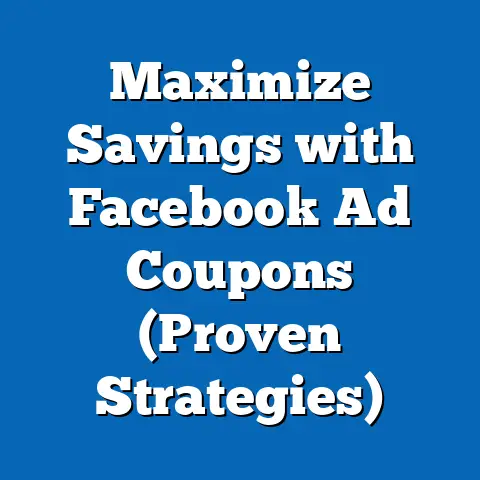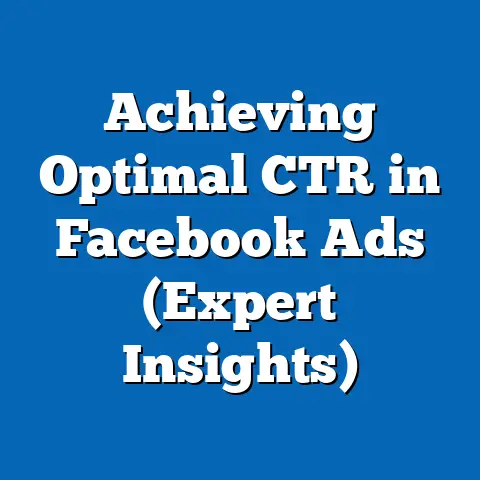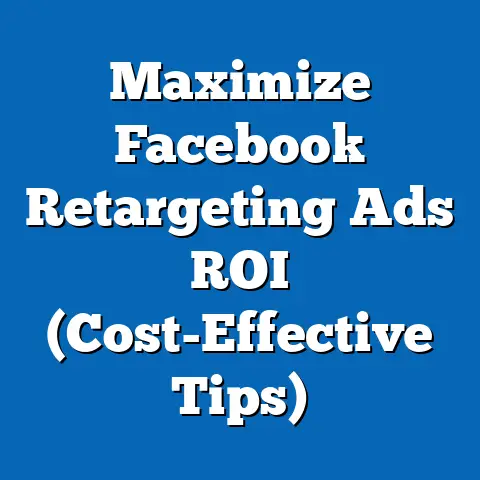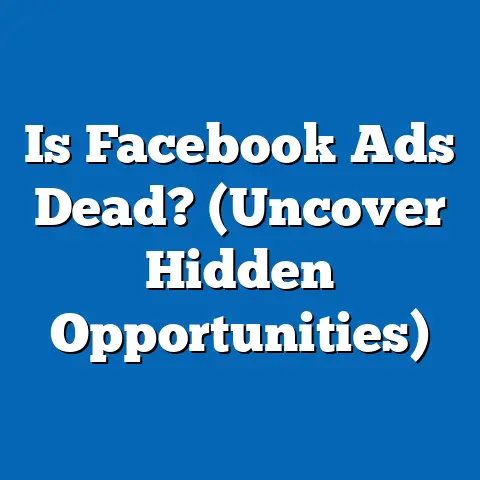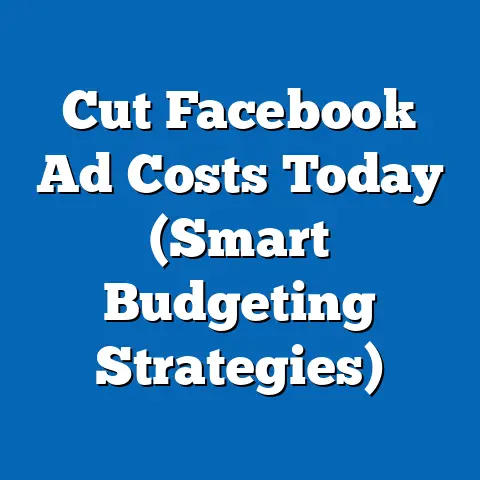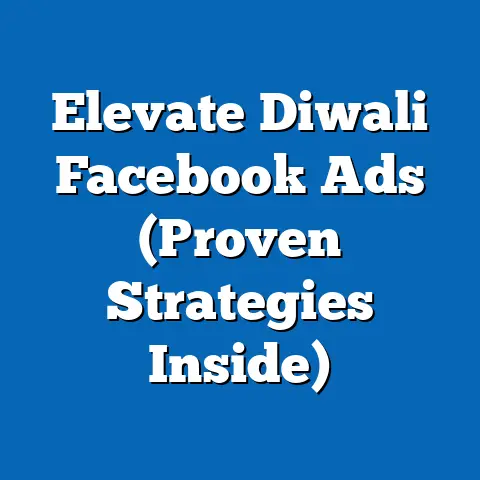Master Bob Proctor’s Facebook Ads (Proven Strategies Revealed)
Just as a beautifully designed floor can transform a room, a well-crafted Facebook ad can revolutionize a brand’s online presence. I’ve always been fascinated by the power of aesthetics, whether it’s in interior design or digital marketing. Think about it: a carefully chosen rug can tie a room together, just like a compelling visual can grab attention on a busy Facebook feed. And when it comes to the artistry of crafting effective Facebook ads, there’s a figure whose wisdom I deeply respect: Bob Proctor.
Proctor, a renowned name in personal development and marketing, brings a unique perspective to the world of advertising. He understands that successful marketing isn’t just about algorithms and data; it’s about understanding human psychology and tapping into the emotional core of your audience. In this article, I’m going to delve into Proctor’s proven strategies for mastering Facebook ads, offering you actionable insights and techniques that can transform your campaigns from ordinary to extraordinary. Get ready to unlock the potential of your Facebook ads and elevate your brand’s online presence.
Understanding the Basics of Facebook Ads
Facebook ads are essentially paid messages that businesses use to reach a specific audience on the Facebook platform. They’re a powerful tool in the digital marketing landscape, offering unparalleled reach and targeting capabilities. I remember when I first started experimenting with Facebook ads; I was amazed by the level of precision you could achieve in reaching your ideal customer.
There are several types of Facebook ads, each with its own strengths:
- Image Ads: Simple yet effective, these ads use a single image and accompanying text.
- Video Ads: Engaging and dynamic, video ads are great for storytelling and capturing attention.
- Carousel Ads: Allow you to showcase multiple images or videos in a single ad, perfect for highlighting a range of products or features.
- Slideshow Ads: Similar to video ads but use a series of images to create a visually appealing experience.
One of the key aspects of successful Facebook advertising is targeting. It’s about identifying and reaching the right audience with the right message. This is where Bob Proctor’s emphasis on understanding your audience comes into play. He often talks about the importance of knowing your customer inside and out – their needs, desires, and pain points. By understanding your audience, you can create ads that resonate with them on a deeper level, leading to higher engagement and conversions.
Takeaway: Facebook ads are a versatile tool for reaching your target audience. Understanding the different ad types and the importance of audience segmentation is crucial for success.
The Bob Proctor Approach to Mindset in Advertising
Bob Proctor’s philosophy on mindset is a cornerstone of his teachings, and it’s incredibly relevant to creating successful Facebook ads. He often talks about the power of the mind and how our thoughts can shape our reality. This concept extends to advertising; your mindset can significantly impact the effectiveness of your campaigns.
Proctor emphasizes the Law of Attraction, which suggests that positive thoughts attract positive outcomes. In the context of advertising, this means believing in your product or service and approaching your campaigns with a positive and proactive attitude. I’ve seen this firsthand in my own campaigns. When I’m genuinely excited about what I’m promoting, my enthusiasm translates into the ad copy and visuals, resulting in higher engagement rates.
Adopting a positive mindset can influence the effectiveness of your ad campaigns in several ways:
- Increased Creativity: A positive mindset fosters creativity, allowing you to come up with innovative and engaging ad concepts.
- Improved Resilience: Advertising can be challenging; not every campaign will be a success. A positive mindset helps you bounce back from setbacks and learn from your mistakes.
- Stronger Connection with Your Audience: When you believe in what you’re offering, you’re more likely to connect with your audience on a deeper level, building trust and loyalty.
Takeaway: Cultivating a positive and proactive mindset is essential for creating successful Facebook ads. Believe in your product or service and approach your campaigns with enthusiasm and resilience.
Crafting Compelling Ad Copy
Effective ad copy is the heart of any successful Facebook ad campaign. It’s what captures attention, sparks interest, and drives action. Bob Proctor’s strategies for crafting compelling ad copy revolve around understanding human psychology and tapping into emotions.
One of the key elements of effective ad copy is storytelling. People are naturally drawn to stories, and ads that tell a compelling story are more likely to resonate with the audience. I’ve found that sharing personal anecdotes or customer testimonials can be incredibly effective in building trust and creating an emotional connection.
For example, instead of simply stating the features of a product, you could share a story about how it transformed someone’s life. Proctor often talks about the power of emotional engagement, and storytelling is a great way to achieve this.
Here are some techniques for writing attention-grabbing headlines and persuasive calls-to-action, inspired by Proctor’s methods:
- Use Strong Verbs: Start your headlines with action words that grab attention and create a sense of urgency.
- Highlight Benefits: Focus on the benefits of your product or service rather than just the features.
- Ask Questions: Engage your audience by asking questions that pique their curiosity and encourage them to learn more.
- Create a Sense of Scarcity: Use language that implies limited availability or exclusivity to drive immediate action.
- Make it Personal: Address your audience directly and make them feel like you’re speaking to them individually.
Takeaway: Crafting compelling ad copy is essential for capturing attention and driving conversions. Focus on storytelling, emotional engagement, and using attention-grabbing headlines and persuasive calls-to-action.
Visual Elements and Design
The visual aspects of Facebook ads are just as important as the copy. A visually appealing ad can grab attention and make a lasting impression. Drawing on Proctor’s strategies for design, I always focus on creating visuals that are both aesthetically pleasing and aligned with my brand.
Imagery plays a crucial role in ad creation. High-quality images that are relevant to your product or service can significantly improve engagement rates. I’ve found that using images of real people using my products can be more effective than generic stock photos.
Color psychology is another important factor to consider. Different colors evoke different emotions, so choosing the right color palette for your ads can influence how your audience perceives your brand. For example, blue is often associated with trust and reliability, while red can create a sense of excitement and urgency.
Branding consistency is also essential. Your ads should be consistent with your brand’s overall visual identity, including your logo, color scheme, and font choices. This helps to reinforce brand recognition and build trust with your audience.
Here are a few examples of high-performing ad designs that align with Proctor’s principles:
- Minimalist Design: Clean and simple designs with plenty of white space can be very effective in drawing attention to the key message.
- Bold Colors: Using bold and vibrant colors can make your ads stand out from the crowd.
- Human Faces: Images of smiling faces can create a sense of connection and build trust with your audience.
Takeaway: The visual aspects of Facebook ads are crucial for capturing attention and making a lasting impression. Focus on high-quality imagery, color psychology, and branding consistency to create visually appealing ads that resonate with your audience.
Budgeting and Ad Spend Optimization
Setting a budget and optimizing ad spend are critical for maximizing your return on investment (ROI) in Facebook advertising. Bob Proctor’s teachings emphasize the importance of making informed decisions based on data and analytics.
A/B testing is a valuable technique for determining which ads are performing best. By testing different versions of your ads, you can identify the elements that resonate most with your audience and optimize your campaigns accordingly. I always recommend testing different headlines, visuals, and calls-to-action to see what works best.
Cost-per-click (CPC) is a metric that measures how much you’re paying for each click on your ad. Monitoring your CPC can help you identify areas where you can reduce costs and improve efficiency.
Return on ad spend (ROAS) is a metric that measures how much revenue you’re generating for every dollar you spend on advertising. Tracking your ROAS can help you determine whether your campaigns are profitable and make adjustments as needed.
Here are some insights on how to analyze ad performance and make data-driven decisions to improve future campaigns:
- Track Key Metrics: Monitor your CPC, ROAS, and other key metrics to identify areas for improvement.
- Analyze Demographics: Understand which demographics are responding best to your ads and adjust your targeting accordingly.
- Test Different Ad Formats: Experiment with different ad formats to see which ones generate the best results.
- Refine Your Targeting: Continuously refine your targeting to reach the most relevant audience.
Takeaway: Setting a budget and optimizing ad spend are crucial for maximizing your ROI. Use A/B testing, monitor key metrics, and analyze ad performance to make data-driven decisions and improve future campaigns.
Scaling and Expanding Your Facebook Ads
Once you’ve found a successful ad campaign, the next step is to scale it effectively. Bob Proctor’s principles of growth and expansion emphasize the importance of continuous learning and adaptation.
Scaling your Facebook ads involves increasing your budget and expanding your reach. However, it’s important to do this strategically to avoid diminishing returns. I’ve found that gradually increasing my budget and monitoring performance closely is the best approach.
Continuous learning and adaptation are essential in the ever-evolving landscape of Facebook advertising. New features and algorithms are constantly being introduced, so it’s important to stay up-to-date on the latest trends and best practices.
Here are some strategies for leveraging analytics and insights to guide scaling efforts:
- Identify Your Top-Performing Ads: Focus on scaling the ads that are generating the best results.
- Expand Your Targeting: Gradually expand your targeting to reach a wider audience.
- Increase Your Budget Gradually: Increase your budget incrementally to avoid overwhelming the system.
- Monitor Performance Closely: Keep a close eye on your key metrics to ensure that your campaigns remain profitable.
Takeaway: Scaling successful ad campaigns effectively requires continuous learning, adaptation, and a strategic approach to increasing budget and expanding reach. Leverage analytics and insights to guide your scaling efforts and ensure that your campaigns remain profitable.
Conclusion
Throughout this article, I’ve explored Bob Proctor’s proven strategies for mastering Facebook ads. From understanding the basics of Facebook advertising to cultivating a positive mindset, crafting compelling ad copy, and optimizing ad spend, I’ve covered a range of techniques that can transform your campaigns.
Proctor’s teachings emphasize the importance of understanding human psychology, tapping into emotions, and making informed decisions based on data and analytics. By embracing the artistry of ad creation and applying the proven techniques shared in this article, you can unlock the potential of your Facebook ads and elevate your brand’s online presence.
I encourage you to take action on your newfound knowledge and start implementing these strategies in your own campaigns. Remember, successful Facebook advertising is a journey, not a destination. Embrace the challenges, learn from your mistakes, and continuously strive to improve your skills. With dedication and perseverance, you can achieve remarkable results and transform your advertising efforts.

